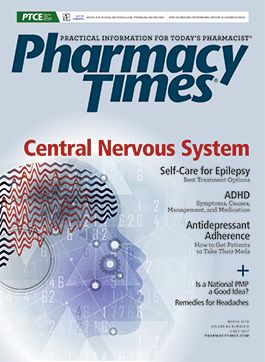Publication
Article
Pharmacy Times
The Earth Is Shifting Under Our Feet: The World of Pharmacy Benefits Is Being Turned Upside Down
Key Takeaways
- PBMs have evolved from third-party administrators to influential entities in drug pricing and distribution.
- Healthcare reforms emphasize value-based care, challenging PBMs to align with medical benefits.
US-based businesses and taxpayers have become increasingly frustrated with the double whammy of increasing spending on medications without the decreasing cost of care from a healthier population.
A Brief History of Pharmacy Benefit Managers
Pharmacy benefit managers (PBMs) were born in the 1960s, matured in the 1970s, and grew substantially in the 1980s in response to a dramatic increase in the cost and number of prescriptions newly available and in use by hundreds of millions of patients. In the 1990s, the PBM marketplace experienced consolidation and a transformation from principally a third-party administrator of claims with a focus on prior authorizations and negotiating lower reimbursement rates. In the latter part of that decade, it further transformed into agents of the purchaser that actively negotiated behind-the-scenes rebates on their clients’ behalf, or at least that was the idea.
Merck—Medco aimed to respond to growing leverage by PBMs and for a time, was the largest PBM in the country, until it broke up in 2003 and Medco became part of the Express Scripts portfolio. By the 2000s, the wall between the pharmacy benefit and pharmacy itself had crumbled, as PBMs initiated large-scale mail order operations and in 2007, CVS merged with Caremark. Meanwhile, the market and operations presence at Blue Cross and Blue Shield plans (eg, Prime Therapeutics) and United HealthGroup (OptumRx) grew through ownership and benefit integration with health plans.
The Conventional Pharmacy Benefit in Misalignment with Health Reform
Despite consolidation and vertical integration, the PBM industry is largely left to finance and distribute drugs. We now spend $425 billion-plus before rebates on medication acquisition and distribution, with almost nothing on services to optimize the use of those drugs to benefit patients’ health.
Health care reform (little “h” and “r”) is about accountability and value for the dollars we spend on health care. It is premised on the idea that we begin to reimburse providers and plans based on the health outcomes improvements that they can produce. The movement is meant to impose risk and reward for lower blood pressure, glycated hemoglobins, and low-density lipoprotein levels, better quality of life, and avoidance of hospitalizations and other forms of “sick care.”
Accelerated by the passing of the Affordable Care Act and now inevitable, the movement away from fee for service is a major disruptive force for the pharmacy sector because our principal weapon against disease, especially chronic disease, is the effective and optimized use of medications. As the risk/reward proposition increases, the emphasis and resources spent on getting the medications right and supporting patients’ use will no doubt increase in parallel.
Frustration is Building with Employers, Taxpayers
Heretofore, PBMs, which are not really benefit managers alone anymore, have operated solely within the pharmacy sector silo without exposure to medical side risk/reward. Any expressions of value from better health have been of no consequence to PBMs, because their existence revolves around financing and distribution of prescription drug products. As the 2 largest groupings of purchasers of health care in the world, US-based businesses and taxpayers have become increasingly frustrated with the double whammy of increasing spending on medications without the decreasing cost of care from a healthier population. Leaders in business and politics have been left to ask, “What are we paying for here?”
In 2015, the Centers for Medicare and Medicaid Services announced the Part D Enhanced Medication Therapy Management Model, which was meant to test innovative benefit designs and services that put the Part D Plan in a risk/reward scenario for Part A and Part B costs.
In 2016, the Health Transformation Alliance was formed and now has more than 40 major US companies cooperating to “group purchase” benefits. They recently announced a “transparent” contracting relationship with CVS/Caremark and OptumRx.1
In a number of states, including Kentucky,2 Missouri, Oklahoma, Utah, Vermont, and West Virginia,3 state Medicaid administrators, desperate to balance reducing drug costs with optimizing health, so as not to cut your nose off to spite your face, have entertained a wide range of disruptions, from importing drugs from other countries to turning rebate structures upside down to taking back the PBM duties from private industry after years of frustration with a lack of transparency. Last month, President Donald J. Trump released, through the Council of Economic Advisors, the report, Reforming Biopharmaceutical Pricing at Home and Abroad, and PBMs played a starring role as a target for positive market disruption.
The Wall is Starting to Crumble
A wall has existed between the medical and pharmacy benefit for more than 4 decades but is starting to crumble. Our national consciousness is screaming “Don’t separate these benefits. We want to align transparent medication purchasing with better health and lower medical costs.” And the marketplace is responding. (10 of the 22 largest Fortune 500 companies by revenue are in the pharmaceutical business, and not one is a manufacturer.)
Major Moves By Major Companies
In December 2017, CVS/Caremark announced its plan to acquire Aetna for $69 billion in a move to take on medical side risk/reward with its pharmacy and PBM assets. As the chief executive of Aetna said recently on the Today show, “The storefront becomes a place [for health care delivery], call it 10,000 new front doors to the health care system.”
In October 2017, Express Scripts said that it is spending $3.6 billion on Evicore, a medical benefits company with care management plug-ins. Because Express Scripts does not own storefronts and health care location pharmacies like CVS does, the combination of mail order with call centers and nonpharmacy staff in the field is the next-best strategy.
Amazon indicated its entry into health care and the pharmacy arena through a number of applications for wholesaler licenses. Business titans Jeff Bezos of Amazon, Warren E. Buffett of Berkshire Hathaway, and Jamie Dimon of JPMorgan Chase pledged to use their own million-plus employees and star power as a laboratory for health care disruption and likely continued erosion of the wall and middlemen.
How Will This Affect Pharmacy Practice?
It is hard to predict how this will affect the profession in the medium and long terms. Will we be viewed as cost centers to be squeezed or investments to yield better outcomes through more coordinated, optimized, and sensible medication use? More likely, we will find that the staff pharmacist model as we know it will not exist in 10 years or maybe even 5. What is certain is uncertainty, and with that usually comes both peril and opportunity.
Troy Trygstad, PharmD, PhD, MBA, is vice president of pharmacy programs for Community Care of North Carolina in Raleigh, which works collaboratively with more than 1800 medical practices to serve more than 1.6 million Medicaid, Medicare, commercially insured, and uninsured patients. He received his PharmD and MBA degrees from Drake University in Des Moines, Iowa, and a PhD in pharmaceutical outcomes and policy from the University of North Carolina at Chapel Hill. He also serves on the board of directors for the American Pharmacists Association Foundation and the Pharmacy Quality Alliance.
References
- McCann D. 40 companies rein in health costs. CFO website. ww2.cfo.com/health- benefits/2017/05/40-companies-unite-rein-health-costs/. Published May 19, 2017. Accessed February 26, 2018.
- Stevens R. PBM regulation legislation introduced. West Virginia Pharmacists Association website. wvpharmacy.org/2016/01/pbm-regulation-legislation-introduced/. Published January 20, 2016. Accessed February 26, 2018.
- Riley T. Lower drug costs: the next frontier for state flexibility. Health Affairs Blog. healthaffairs.org/do/10.1377/hblog20180214.827973/full/. Published February 16, 2018. Accessed February 26, 2018.






















